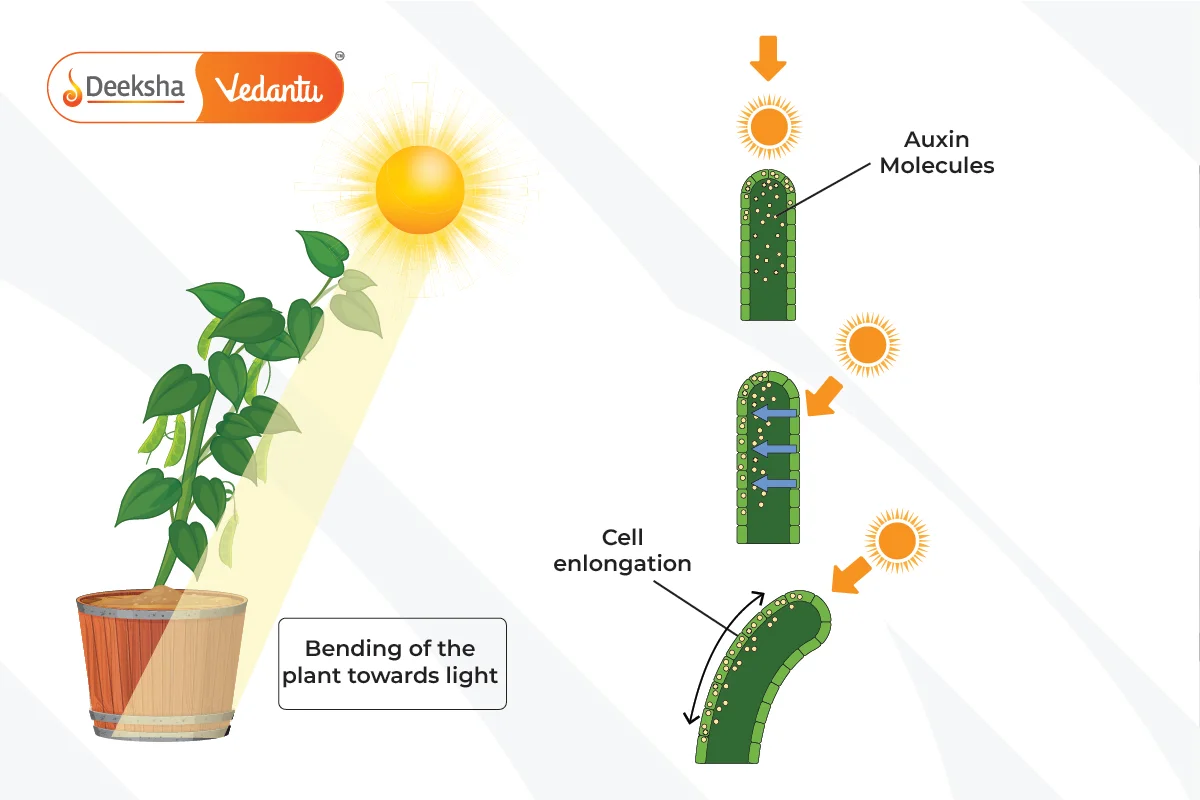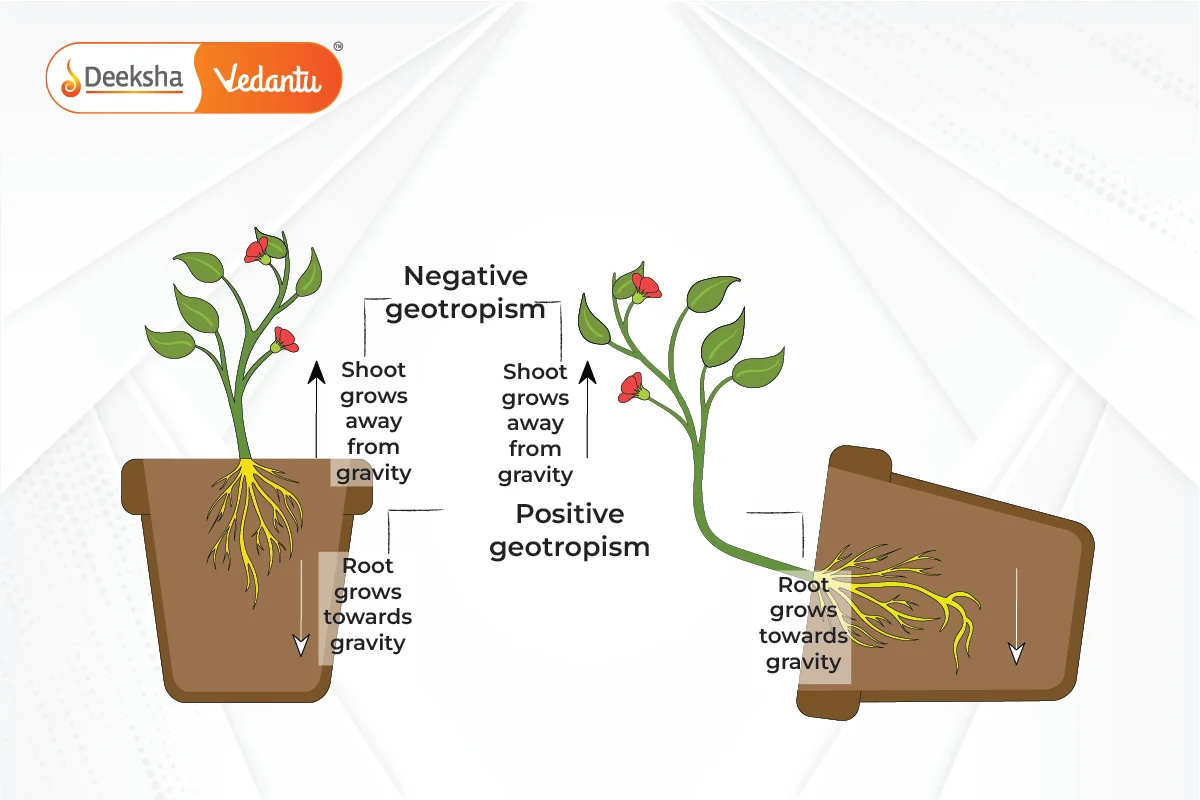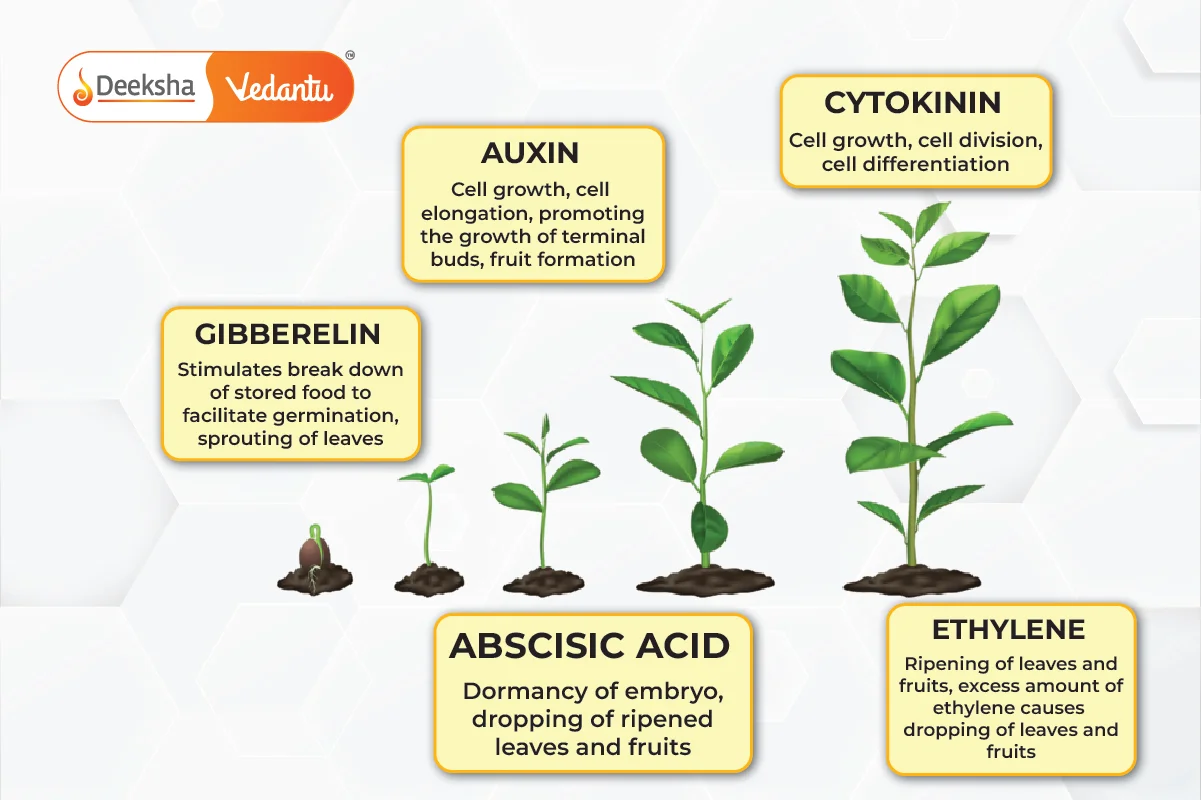Introduction
Plants, unlike animals, do not have a nervous system to coordinate their activities. However, they still respond to various stimuli from their environment. Plant responses are controlled through chemical coordination using plant hormones (also known as phytohormones) and by adjusting their growth patterns. While these responses are slower than those in animals, they play a crucial role in the survival and adaptation of plants to their surroundings. Plant coordination involves growth movements, responses to environmental stimuli, and the role of specific hormones in regulating growth and development.
Plant Movements
Plants exhibit two primary types of movements in response to stimuli:
- Tropic Movements (Growth-Dependent Movements): These are slow, directional growth responses of a plant towards or away from a stimulus. Tropic movements are regulated by plant hormones, primarily auxins.
- Nastic Movements (Growth-Independent Movements): These movements are not dependent on the direction of the stimulus and are typically rapid. Nastic movements do not involve growth and are caused by changes in cell turgor pressure.
Growth-Dependent Movements (Tropic Movements)
Tropic movements in plants are directional and depend on the direction of the stimulus. The plant either grows towards the stimulus (positive tropism) or away from it (negative tropism). Tropic movements are controlled by plant hormones like auxins, gibberellins, and cytokinins.
Types of Tropisms:
- Phototropism:
- Definition: The growth of a plant in response to light. The shoots grow towards the light (positive phototropism), while roots generally grow away from light (negative phototropism).
- Mechanism: The plant hormone auxin plays a crucial role in phototropism. When light shines on one side of the plant, auxin accumulates on the shaded side. This causes the cells on the shaded side to elongate more, resulting in the plant bending towards the light.
- Example: Sunflowers bending toward the sunlight or houseplants growing toward a window.

- Geotropism (Gravitropism):
- Definition: The growth of a plant in response to gravity. Roots exhibit positive geotropism as they grow downward, while shoots exhibit negative geotropism as they grow upward against gravity.
- Mechanism: Auxins also play a role in geotropism. In roots, auxins inhibit cell elongation, leading to the downward growth of the root. In stems, auxins promote cell elongation, causing the upward growth of shoots.
- Example: Roots growing down into the soil and stems growing upward toward the sky.

- Hydrotropism:
- Definition: The growth of plant roots in response to water. Roots grow towards areas with a higher water concentration (positive hydrotropism) to ensure the plant gets sufficient water for survival.
- Example: Plant roots growing towards underground water sources.

- Thigmotropism:
- Definition: The growth response of a plant to touch or physical contact. Climbing plants exhibit thigmotropism, where tendrils wrap around a support when they come in contact with it.
- Example: The coiling of tendrils around a fence or trellis in plants like peas and ivy.

Growth-Independent Movements (Nastic Movements)
Nastic movements are non-directional movements in response to stimuli, meaning that the movement is not dependent on the direction of the stimulus. These movements are typically rapid and involve changes in turgor pressure (the pressure exerted by water inside the plant cells).
- Thigmonasty (Seismonasty):
- Definition: Movement in response to touch. The most well-known example is the Mimosa pudica (touch-me-not plant), where the leaves fold when touched.
- Mechanism: In Mimosa pudica, the rapid folding of leaves is caused by a sudden loss of water in the cells of the pulvinus (a specialized joint-like structure at the base of the leaf). This loss of turgor pressure results in the closing of the leaves.
- Example: Mimosa pudica folds its leaves when touched or shaken, likely as a defense mechanism against herbivores.

- Nyctinasty:
- Definition: Movement in response to changes in light or day-night cycles (circadian rhythms). Many plants close their flowers or fold their leaves at night.
- Example: The prayer plant folds its leaves upwards at night, and some flowers close at dusk.
Role of Plant Hormones (Phytohormones)
Plant hormones, or phytohormones, play a vital role in controlling growth, development, and responses to environmental stimuli. These hormones are produced in small quantities but have significant effects on the plant’s physiological processes.
Major Types of Plant Hormones:

- Auxins:
- Function: Auxins promote cell elongation and are crucial in phototropism and geotropism. They are responsible for the growth of roots and shoots. Auxins also inhibit the growth of lateral buds, a phenomenon known as apical dominance.
- Example: Indole-3-acetic acid (IAA) is the most common natural auxin. Auxins accumulate on the shaded side of the plant, causing cells to elongate, and the plant bends toward the light.
- Gibberellins:
- Function: Gibberellins stimulate stem elongation, seed germination, and flowering. They are also responsible for breaking seed dormancy and initiating seedling growth.
- Example: Gibberellins help in the rapid growth of plant stems and are often used commercially to increase the size of fruits like grapes.
- Cytokinins:
- Function: Cytokinins promote cell division and delay leaf senescence (aging). They are produced in roots and transported to other parts of the plant.
- Example: Cytokinins are involved in promoting lateral growth, ensuring that the plant has a more bushy appearance.
- Abscisic Acid (ABA):
- Function: Abscisic acid is a growth inhibitor and is involved in processes like seed dormancy and the closing of stomata during water stress. It helps plants survive unfavorable conditions by promoting dormancy in seeds and causing leaf fall.
- Example: During drought conditions, abscisic acid accumulates in the leaves, causing stomata to close, reducing water loss through transpiration.
- Ethylene:
- Function: Ethylene is a gaseous hormone that promotes fruit ripening and leaf abscission (falling off of leaves). It is also involved in the aging process of flowers.
- Example: Ethylene is responsible for the ripening of fruits like bananas and tomatoes. Commercially, ethylene is used to induce uniform ripening in fruits after they are harvested.
Coordination in Plants vs. Animals
Coordination in plants is slower than in animals because plants rely on hormones for growth and movement, whereas animals have a nervous system that allows rapid responses. While plants respond to environmental stimuli by adjusting their growth patterns, animals can respond almost instantly through electrical impulses transmitted by neurons.
Key Differences:
- Nervous System vs. Hormones: Animals have a nervous system with neurons that transmit signals rapidly. Plants coordinate responses through hormones that regulate growth and movements.
- Response Time: Animal responses are typically quick (milliseconds to seconds), while plant responses (except for nastic movements) are slow (hours to days).
- Types of Responses: Animal responses are voluntary or involuntary muscle actions, while plant responses are growth-oriented, such as bending toward light or growing roots toward water.
Examples of Coordination in Plants
Phototropism:
When a plant is exposed to light from one direction, the hormone auxin accumulates on the shaded side of the stem. This causes the cells on the shaded side to elongate more than those on the light-exposed side, leading to the bending of the plant toward the light.
Geotropism:
When a seed germinates, auxin accumulates on the lower side of the shoot and root due to gravity. In shoots, this causes upward growth away from gravity (negative geotropism), while in roots, it inhibits cell elongation on the lower side, causing downward growth (positive geotropism).
Thigmotropism:
In climbing plants, such as grapevines or peas, tendrils wrap around any object they touch. The cells on the side opposite the contact grow faster, resulting in the coiling of the tendril around the support.
Practice Questions
Q1: How does auxin contribute to phototropism in plants?
- Answer: Auxin promotes cell elongation in plant shoots. In response to light, auxin accumulates on the shaded side of the shoot, causing those cells to elongate more, resulting in the bending of the plant toward the light source.
Q2: Describe geotropism and explain its significance for plant growth.
- Answer: Geotropism is the growth response of plants to gravity. Roots exhibit positive geotropism, growing downward to anchor the plant and absorb water and nutrients. Shoots exhibit negative geotropism, growing upward to reach light for photosynthesis.
Q3: What are the functions of ethylene in plants?
- Answer: Ethylene is a plant hormone that promotes fruit ripening, leaf abscission, and aging of flowers. It is also involved in responses to mechanical stress and helps regulate plant development under adverse conditions.
FAQs
Thigmotropism is the growth response of plants to touch. Climbing plants like peas and vines use thigmotropism to wrap their tendrils around supports, allowing them to grow upwards and access more sunlight for photosynthesis.
During drought, the plant hormone abscisic acid (ABA) causes stomata to close, reducing water loss through transpiration. This helps the plant conserve water and survive during dry conditions.
Gibberellins are responsible for promoting stem elongation, seed germination, and flowering. They help break seed dormancy and enable plants to grow taller, which is beneficial for accessing light.












Get Social